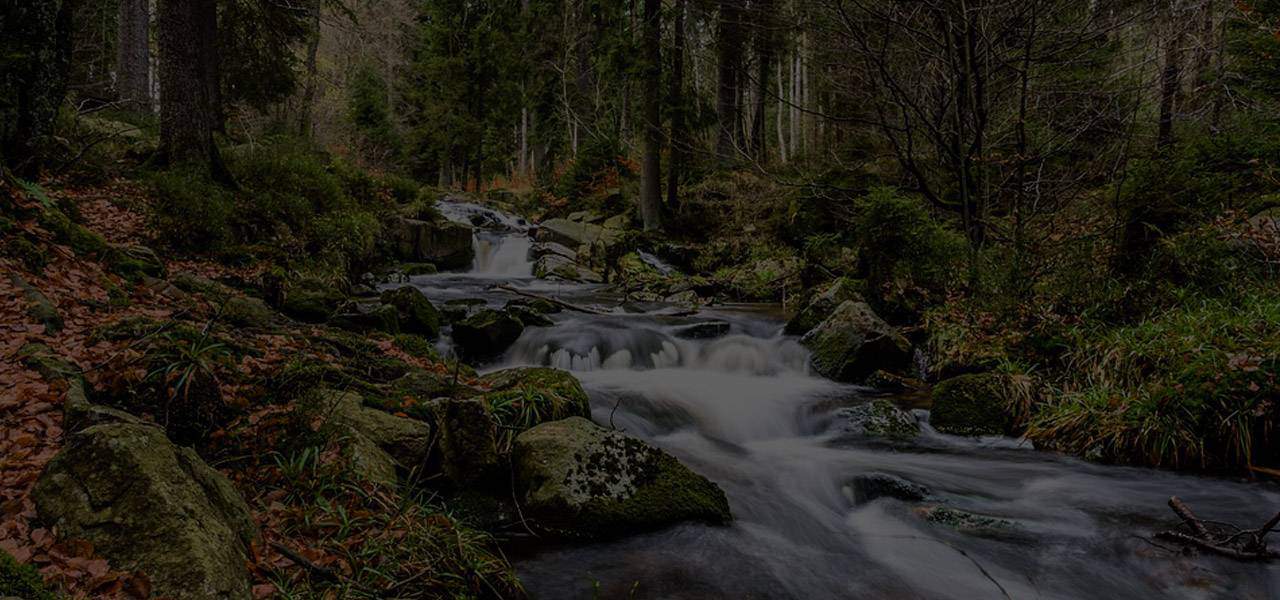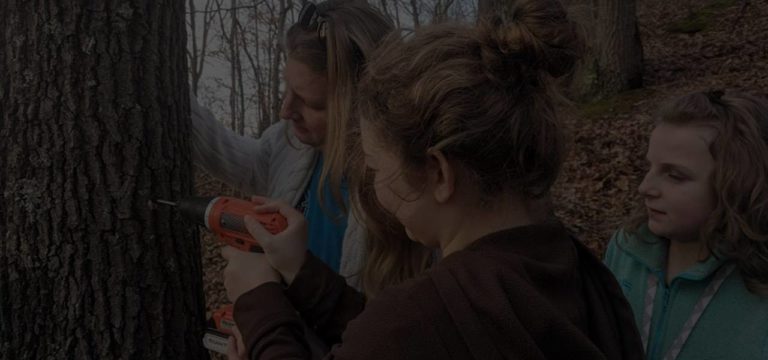Finding Water in the Wilderness Easily
Water should be the first thing on your mind in a survival situation. The rule of threes says you can go a maximum (in good conditions) of three days without water, but sod’s law says you might be in the desert in the summer.
When bugging out, you don’t have the luxury of a water stockpile, so unless you know all the ways to find it, you might as well kiss the “1 gallon / person / day” rule good-bye.
How to Locate Water
The first thing to do is to read the land. Look for valleys (even if they are just shallow trenches or ditches by road sides) which water might flow into, and high places from where water will flow down, or at least you might get a better look around.
Lines of trees or plants which stick out from the surrounding landscape almost always mean water, because different plants grow near the water’s edge (think of an oasis in the desert). This is especially true of thick, green plants and trees, which can also often be good source of foraged food. Water with no plants growing around it is likely to be contaminated and is best avoided if possible.

You can also read animals. Bees rarely build hives more than more than 3 of 4 miles from a source of water. Ants and other insects also need water but cannot travel as far or as fast as bees, so are a good indication that you’re getting close. Small birds, especially grain eaters like jays and wood pigeon (don’t bother with birds of prey or seabirds as they can fly too far) have to nest near water. As small animals, the weight of a drink of water is a considerable inhibitor to flight, so a bird flying in long, easy swoops is probably going towards the water, whereas one coming back has to work harder and flies in short hops between trees.
Large mammals like pigs and cattle also need water but can travel long distances between drinks, so following a single animal is not a good strategy. However, an established path, especially if it fulfils other clues like running downhill or toward vegetation, will probably lead eventually to a water source. This rule also means that if you wait long enough at a water source, you’re likely to see a large mammal, which could be dangerous, or could be dinner.
Some plants also store water within their structure. Some trees form natural bowl shapes or reservoirs between their roots or branches This is especially common in species of she-oaks and wattle. Thick bamboo stems store safe drinking water and can also function as small cups, and small stems can be used as straws.
Of course, once you have found water it might not be safe to use it as it is. You will need to filter, boil, sterilize or distill it (depending on the problem/impurity) to make it drinkable, but there is not space to cover that in full here. Always take water from the fastest flowing area of a stream/river, and avoid areas of green moss or other contaminants.
Extracting Water
Apart from finding naturally occurring liquid water, there are also a few ways to extract water from the environment around you.
Snow and Ice
Think of snow and ice as already water, just in a different form. Untouched snow tends to be very pure water (though don’t ever eat yellow snow!), so you can melt it and drink it straight away. Impurities can freeze straight into ice so with that you need to be more careful.
Avoid eating the snow straight away, as ingesting any amount of cold substance (especially in an already cold, snowy environment) can cause your core temperature to fall, which can be fatal. You can pack water bottles or similar containers with snow and carry them in your pockets or close to your body to melt the snow down before drinking, and you can break ice into small pieces and do the same thing. Beware though that nothing comes free and this method is essentially a heat exchange, which means the snow will cool you down even as you warm it up.
If you must eat it fresh, swill small amounts of snow around your mouth to melt it as much as possible before swallowing and only ever have a tiny amount at a time, then wait to feel warm inside again before taking more.
As a side note, without melting snow can be very useful as a cold compress (a very temporary one!) for treating wounds.
Digging Waterholes
If you find an area of ground where you think you should find water (lowland, surrounded by hills, lots of green vegetation etc.) but can’t find any, then dig down a few feet and wait for water to pool at the bottom. Anything more than two or three feet is probably not worth the effort and you should look elsewhere. Make sure to make your hole big enough to fit your container into and to dig away from any contaminants or droppings on the ground.
In coastal areas you can dig water holes on the shore side of large sand dunes. The sand dunes protect the rain water when it blows in from the sea, which then floats at the top of the water table, above the slightly heavier salt water. With these holes you should only have to dig two or three inches before freshwater, any further and you hit brackish or saltwater which will contaminate the fresh stuff you want.
Be aware that water collected by digging holes will not be clean and should be filtered and purified if possible.
Condensation
Vegetation stores moisture, which is released a bit like sweat and will condense if you put it in a container. Wrap a clear plastic bag (an opaque one won’t work) or non-lubed condom around a tree branch or fill it with cut vegetation (this will work but is not as efficient and will only work once, a tree can be used again and again) then leave it in the sun and wait. After a while, you should see condensation on the inside of the bag, and the water will eventually pool at the bottom.
This is very pure, perfectly drinkable water and can be used as is.
The same principle can be used to build solar stills: fill a container or a hole with dirty water (or seawater), fix a clear plastic sheet over the top and place a weight in the middle with a smaller container like a cup directly underneath, sitting in the water. Leave it in the sun and the water should evaporate (leaving impurities like salt behind in the original container), condense on the plastic, then run down towards the weight and fall off into the cup. This technique was used by Robert Redford in the brilliant survival film All is Lost.
Rain
Of course, you can also collect rainwater. As already stated it tends to collect in dips and recesses in trees, but even something as simple as remembering to leave a bucket outside at night can give you a day’s useful water the next morning. If you do, make sure to secure it to the ground overnight as rain is often accompanied by wind, which could tip the container over.
Dew
You can also collect dew every morning, by building a large, flat surface for it to condense on. In the absence of building materials you can also just take advantage of what you have, like collecting by shaking it from folds in your tent’s canvas.
Using a Spiel
Like other plants, trees store moisture inside their trunks. You can access this only at certain times of the year when the sap is ‘running’ or ‘rising’. This is when the temperature is above freezing during the day, but below at night at night (as winter becomes spring).
Make a hole in the side of the tree (the south side tends to be easier to tap) at an upward angle of about 45° and insert an instrument to extract the sap. Ideally you want a speil, a special type of tube specially for tapping trees, but any tube-shaped object will do, or even the flat of a knife if necessary. Position a container underneath the tube to store the liquid and leave it a while, some trees take hours, some minutes.




